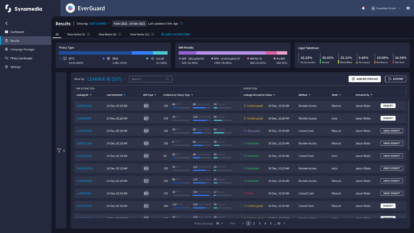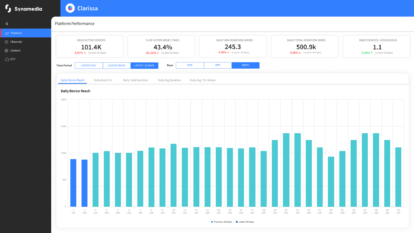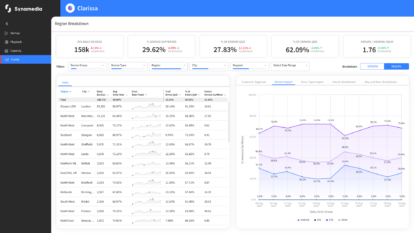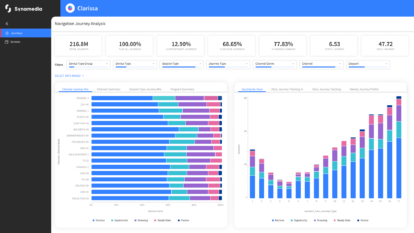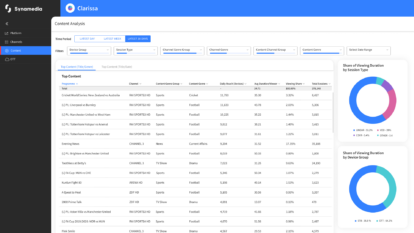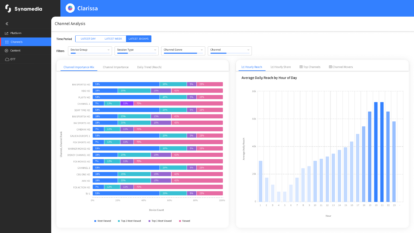Business broadband is a tightly contested battleground. With superfast coverage becoming ubiquitous (and ultrafast not far behind) it’s increasingly difficult for service providers to differentiate.
That’s where the Reference Design Kit for Broadband – RDK-B – comes in.
The broadband iteration of RDK, RDK-B is a standardised open-source software platform for broadband devices and services. It’s essentially a platform that allows operators to deliver the best broadband experience and build custom apps so subscribers can get the most out of their broadband network.
In other words, it gives your business customers a platform to exact more control and flexibility to leverage your business broadband offering.
Let’s dig into that.
Why is RDK-B valuable?
RDK-B is a huge opportunity to help your business customers realize new kinds of value from their broadband service, and empower your own organization to deliver better support, faster.
For instance:
-
- RDK-B empowers you to build new products and services that help your customers quickly meet their emerging business needs.
- RDK-B gives you a whole new channel of comprehensive data about your devices as they’re being used. This is a gold mine for your support reps to increase first-call resolution – and by extension, send customer satisfaction skywards.
- RDK-B makes it easier to adapt to the changing nature of work post-COVID-19 – demand for better security and connectivity solutions has risen 25%
- RDK-B means you can combine devices with operator and third-party applications in order to support a wider range of experiences
Those are just some examples of why RDK-B can be valuable to your operation.
Now let’s look at how you can capitalize on the RDK-B opportunity – and what that means for your business customers.
How to seize the RDK-B opportunity?
Developing an RDK-B offering is a huge opportunity – but it’s also technically demanding. For your SMB customers to get value from RDK-B, it’s not enough to provide an RDK-B-enabled device. You have to build value-add products and services they can effortlessly take advantage of.
The problem is, designing, developing and deploying these products and services takes significant effort. Monitoring and updating software – critical to pre-empting disrupted service and costly issues – is an ongoing concern.
And critically, the providers that bring new applications to market fastest will reap the biggest rewards. Slow, cumbersome processes don’t just defer value – they reduce it, as the untapped market share shrinks.
That means the path of least resistance for quickly developing an RDK-B offering –one that’s future-proof, stable and integrates with your existing services and technology architecture – is partnering with specialists.
The right RDK-B partnership (with a specialised provider) empowers you to capitalise on the RDK-B opportunity without the heavy lifting.
From defining, designing and deploying RDK-B devices, apps and services, to ongoing monitoring and management, a smart RDK-B partnership can help you differentiate your offering at pace.
How does this look for your business customers? You could empower them to:
-
- Split their network and give different parts of the business priority access to bandwidth. Like, say, creating separate customer and employee networks – to maintain security for internal servers and systems while optimising the customer experience.
- Create a guest network, so guests – like visiting clients, contractors working on-site or in-store customers – could access the same high-speed internet without compromising on security.
- Set-up a mesh Wi-Fi network that provides seamless connectivity in every corner of the workplace, without manual input. To allow employees to work from anywhere and collaborate without hassle, whether from the CEO’s office or the canteen.
- Manage employee devices centrally, to ensure all devices have the right apps and services installed – like a VPN app to maintain security, or a business reporting app for managing expenses. So they’d have more control over their employee network.
- Enable Single Sign-On (SSO) for employees and customers, for constant, seamless connectivity between locations. And deliver a way better employee and customer experience, mitigating risk but without endless authentication hurdles (or endless calls to IT).
- Enable zero-touch provisioning (ZTP) to deploy devices across the business remotely, avoiding time-consuming and error-prone manual configuration. And dramatically reduce IT’s burden, allowing smaller teams to have a disproportionate impact, irrespective of location.
The point is, developing an RDK-B offering means adding totally new value for your SMB customers.
From their perspective, it means increased productivity. It means improving the employee experience – and the knock-on effects on engagement and retention. It means improving the customer experience – and the implication for sales, customer lifetime value, loyalty and Net Promoter Score (NPS).
And it means getting better, faster support if they need it – to avoid disruption that could damage the bottom line.
From your perspective, that’s a powerful value proposition.
Find out how Synamedia can help you to seize the RDK-B opportunity with this short demo video
About the Author
JT Taylor is responsible for developing and driving all product marketing, sales enablement, and thought leadership initiatives for two areas of the Synamedia portfolio: Synamedia Go, an open, modular, and flexible streaming video platform; and Gravity, a device management platform that can simplify the management of subscriber’s whole home network. When he’s not wearing his marketing hat, JT is an avid golfer and pseudo musician.

